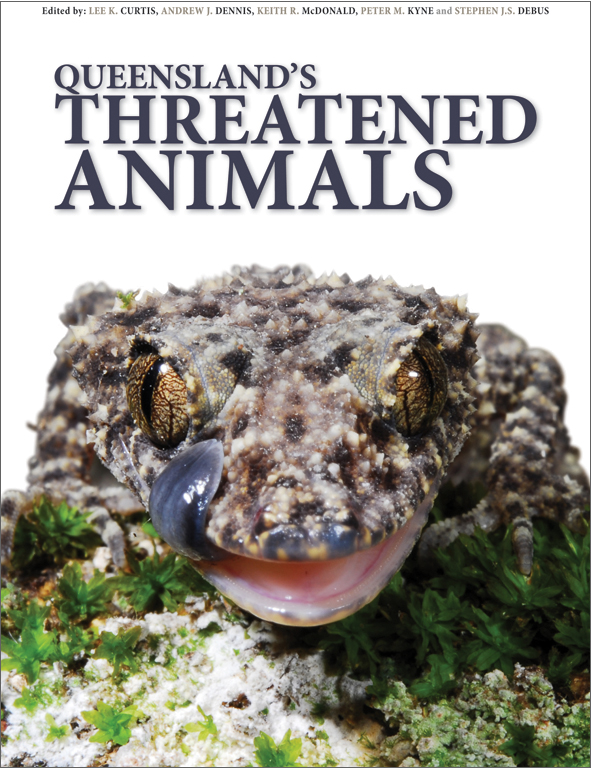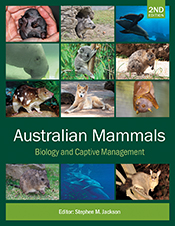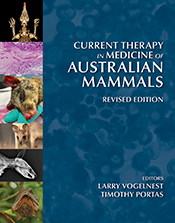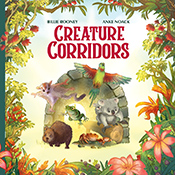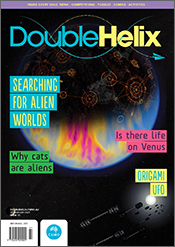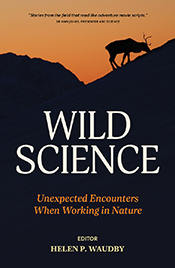Queensland's Threatened Animals
Edited by: Andrew J Dennis, Keith R McDonald, Peter M Kyne, Stephen JS Debus By: Lee K Curtis
A comprehensive and practical guide to Queensland's threatened animals.
Queensland is home to 70% of Australia’s native mammals (226 species), over 70% of native birds (630 species), just over half of the nation’s native reptiles (485) and native frogs (127), and more than 11 000 native plant species. Hundreds of these have a threatened status in Queensland. In order for Queensland to maintain and recover a healthy biodiversity we must address the serious problems faced by our natural environment – habitat loss, inappropriate land management, change in fire regimes, pollution of natural resources, proliferation of invasive species and climate change. + Full description
This book features up-to-date distribution data, photos and maps for most of Queensland’s threatened animals. It also includes a comprehensive list of resources, with key state, national and international organisations involved in the recovery and management of threatened species.
Queensland's Threatened Animals will provide vital information to scientists, educators, business entities, government agencies, students, community groups, environmental NGOs, regional NRMs and potential volunteers.
- Short descriptionNews
No longer available in a print edition.
Reviews
"For those unacquainted with the details, the book provides a well articulated introduction that manages to explain some complex ideas simply.
"I would recommend this book to anyone wishing to participate in species recovery in Queensland or interested in finding out more about the field."
James Brazill-Boast, Corella, pp. 102, Vol 36 (4), 2012
"This book is a commendable source of information that draws together knowledge from hundreds of contributors to focus on 226 animal species that are threatened in Queensland."
Deborah Metters, Land for Wildlife South East Queensland, pp. 13, October 2012
"... a must-have reference book that will provide vital information to scientists, educators, business entities, government agencies, students, community groups, environmental NGOs, regional NRMs and potential volunteers."
Queensland Landcare, March 2012
"… shows us remarkable achievements in the understanding of species and their needs and in the extraordinary commitment, determination and inspiration of their researchers who have achieved scientific excellence on shoe-string budgets.
"Most conservation of fauna is determined by political processes according to what people think is worth preserving. With this book, the editors have assembled for the first time under one roof, an authoritative blueprint that will guide everyone from the landowner to the politician through the plights of the entire spectrum of threatened fauna species in Queensland…Congratulations on a magnificent resource."
Steve Van Dyck, Wildlife Australia Magazine, Autumn 2012
"Queensland’s Threatened Animals is a great resource in beginning to learn how threatened species conservation works within different legislative bounds and about the status of Queensland’s threatened animals and what actions are being taken to preserve them."
Eridani Mulder, Pacific Conservation Biology, June 2013
Details
ePDF | February 2012ISBN: 9780643104563
Publisher: CSIRO Publishing
Available from eRetailers
ePUB | February 2012
ISBN: 9780643104570
Publisher: CSIRO Publishing
Available from eRetailers
Features
- Includes up-to-date distribution data, photos and maps
- Includes a comprehensive list of resources, with key state, national and international organisations involved in the recovery of threatened species
- Complemented by an open access website that will be updated on a regular basis
Contents
IntroductionWhy this book?
Introduction to threatened species
What is a threatened species?
Listing species as threatened – the process and reasons
Why the species in this book were chosen
Level of risk and knowledge of risk – a dynamic process
Coming off the list
An evolving process
List of threat categories
A history of threatened species recovery and management in Queensland
Extinct in Queensland
Threatened animals and regional ecosystems
How to use this book
Species Profiles
INVERTEBRATES
VERTEBRATES
View the full table of contents (PDF).
Authors
Lee Curtis is the author of the Green Guide to Kangaroos and Wallabies of Australia as well as the Whitley award winning Wallabies, Wombats and Other Mammals of Australia. She is a freelance journalist and copywriter who is passionate about Australia’s natural environment and wildlife. Lee is an active member of the Wildlife Preservation Society of Queensland and has been correspondent for Wildlife Australia Magazine since 2002. She writes about wildlife for a variety of publications and does presentations whenever an opportunity to help educate children and/or the public arises. Lee’s volunteer work with several threatened species recovery projects in Queensland over the years inspired her to organise the compilation of a resource guide to Queensland’s threatened animals in order to facilitate networking and communication among those involved in species management and recovery.Andrew Dennis has a PhD in tropical ecology. He has conducted research through JCU, QPWS, CSIRO and the EarthWatch Institute on the ecology and management of over a dozen threatened animals in northern Australia, including frogs, mammals and birds. Andrew has also authored or contributed to a range of recovery plans and teams for single and multiple species. In addition, he has investigated the ecological consequences of species loss and its wider ramifications – examining the impacts of changes in species abundance, distribution and behaviour on the process of seed dispersal in tropical rainforest – a process driven primarily by animals, several of which are listed as threatened. Andrew has authored numerous book chapters and journal articles and was lead editor for Seed Dispersal: Theory and Its Application in a Changing World, in which several chapters investigate the consequences of species loss to the processes that maintain vegetation communities.
Keith McDonald has worked in Queensland government conservation agencies for the last 40 years. His work has covered most parts of the state and has included threatened species management, monitoring and research with a special emphasis on frogs and reptiles. He has published or co-authored numerous publications on Queensland fauna, coordinated and been involved in recovery teams associated with threatened species and has worked on the management of protected and threatened species on and off the protected area estate. He is the recipient of the Queensland Museum Medal, a Cassowary Award from the Wet Tropics Management Authority and was a member of the international team receiving the CSIRO Medal for studies on the chytrid fungus which decimated frog populations. He is Vice-president (Projects) of the Wildlife Preservation Society Queensland. His involvement in this book is as a private individual.
Peter Kyne has a background in the biology, fisheries and conservation of chondrichthyan fishes (sharks, rays, skates and chimaeras). He completed his PhD on chondrichthyan bycatch in Queensland's trawl fishery, examining the effectiveness of bycatch reduction devices for these fishes. Peter is an active member of the IUCN Shark Specialist Group, having assessed the conservation status of numerous Queensland chondrichthyans. He has also worked on freshwater fishes of northern Australia, and has an interest in bird ecology and conservation. Peter is currently based at Charles Darwin University in Darwin.
Stephen Debus studied biology at Macquarie University and did a graduate thesis on the Little Eagle at University of New England, Armidale, where he has remained. After working as a research assistant in bird ecology at UNE in the 1980s, he did a Masters on owls in the ’90s and a PhD and post-doc on declining woodland birds in the 2000s. Stephen recently reviewed the conservation status of various birds for NSW Department of Environment and Heritage. He now works as an ecological consultant, and is an honorary research associate at UNE, doing projects on various raptors. He co-edits the BOCA journal Australian Field Ornithology, edits the Australasian Raptor Association (ARA) journal Boobook, and serves on the Australian Bird Study Association committee (handling the raptor special issues of Corella). Stephen has authored field guides on raptors and owls, contributed to ARA conference proceedings and participated in several Red Goshawk projects.


